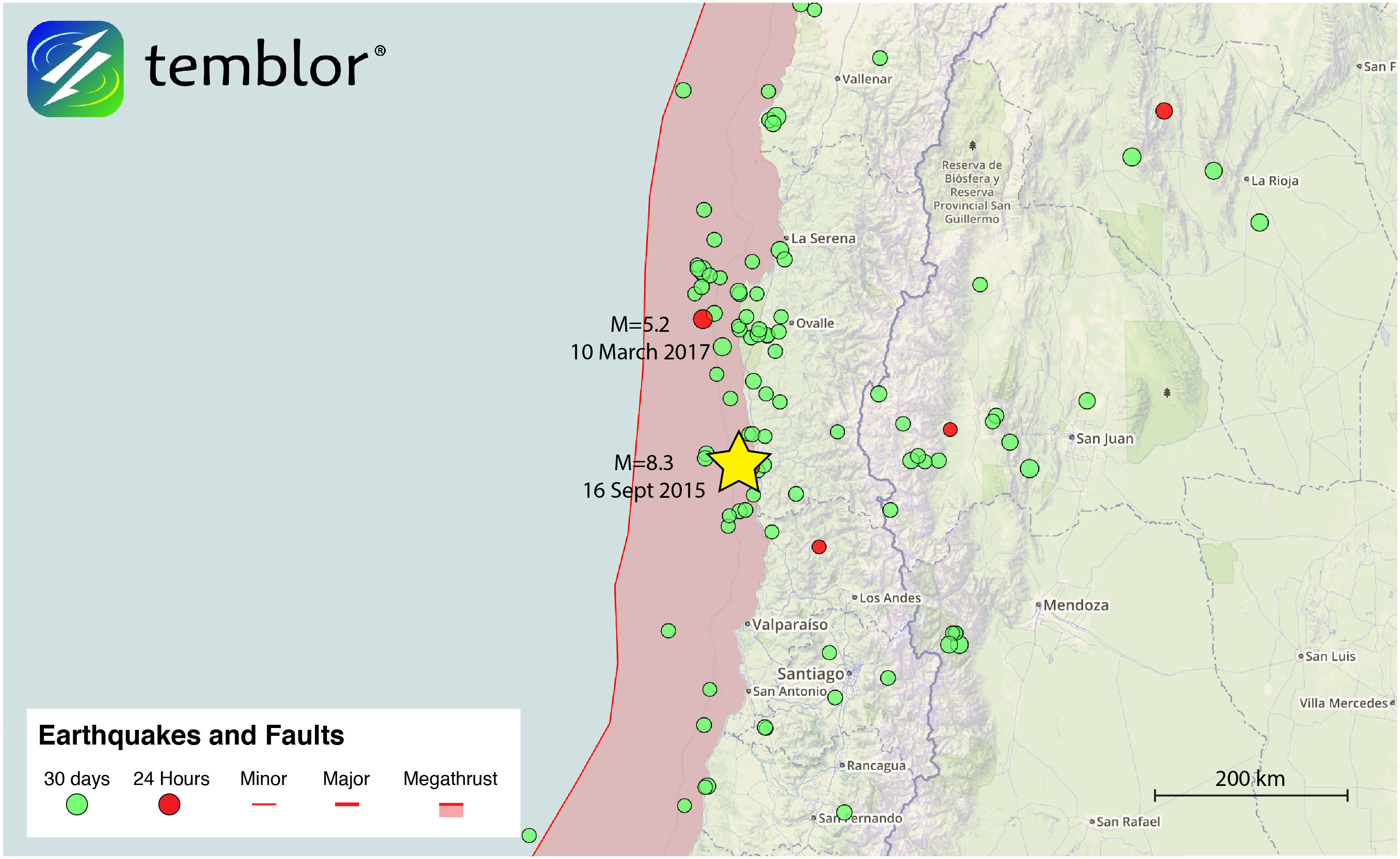By David Jacobson, Temblor

Last night, at 3:22 a.m. local time, a M=5.2 earthquake shook central Chile in what is possibly an aftershock of the September 16, 2015 M=8.3 Illapel earthquake which killed at least 13 people. While last night’s offshore quake was not strong enough to cause damage, it was felt onshore close to the epicenter. However, it was not felt in the nation’s capital of Santiago over 300 km away.
Based on the location, depth (10 km), and focal mechanism, this earthquake occurred on the subduction zone, where the continental South American plate overrides the oceanic Nazca plate. These subduction zones are where megathrust earthquakes occur. These quakes are largest anywhere on earth, and can exceed M=9.0. In fact, Chile is the location of the largest earthquake ever recorded, a M=9.5 on May 22, 1960. However, that quake occurred several hundred miles south of last night’s event.
Using the Global Earthquake Activity Rate (GEAR) model, we can see if the M=5.2 earthquake which shook Chile is expected or not. This model can be viewed in Temblor. The GEAR model forecasts the likely earthquake magnitude in your lifetime for anywhere on earth. It does this by incorporating global strain rates and the last 38 years of seismicity. Because offshore Chile is home to a subduction zone where many earthquakes occur, the likely earthquake magnitude in your lifetime for this location is M=7.25-7.5. In fact, in most places just offshore of Chile, M=7+ earthquakes are expected in your lifetime. In the last century, within 400 km of this event, there have been 15 M=7+ earthquakes.

What this shows is that last night’s event should not be considered surprising at all. For one of the most seismically active countries on earth, magnitude 5 earthquakes occur frequently. Having said that, depending on their location, magnitude 5 earthquakes can cause damage, and should not be taken lightly.
References
European-Mediterranean Seismological Centre (EMSC)
USGS
- Structures can be both earthquake-resilient and sustainable - July 19, 2024
- Earthquakes rattle Palawan, Philippines: Is the region as stable as we thought? - July 3, 2024
- Seismic retrofit rates highlight inequitable efforts - June 20, 2024
